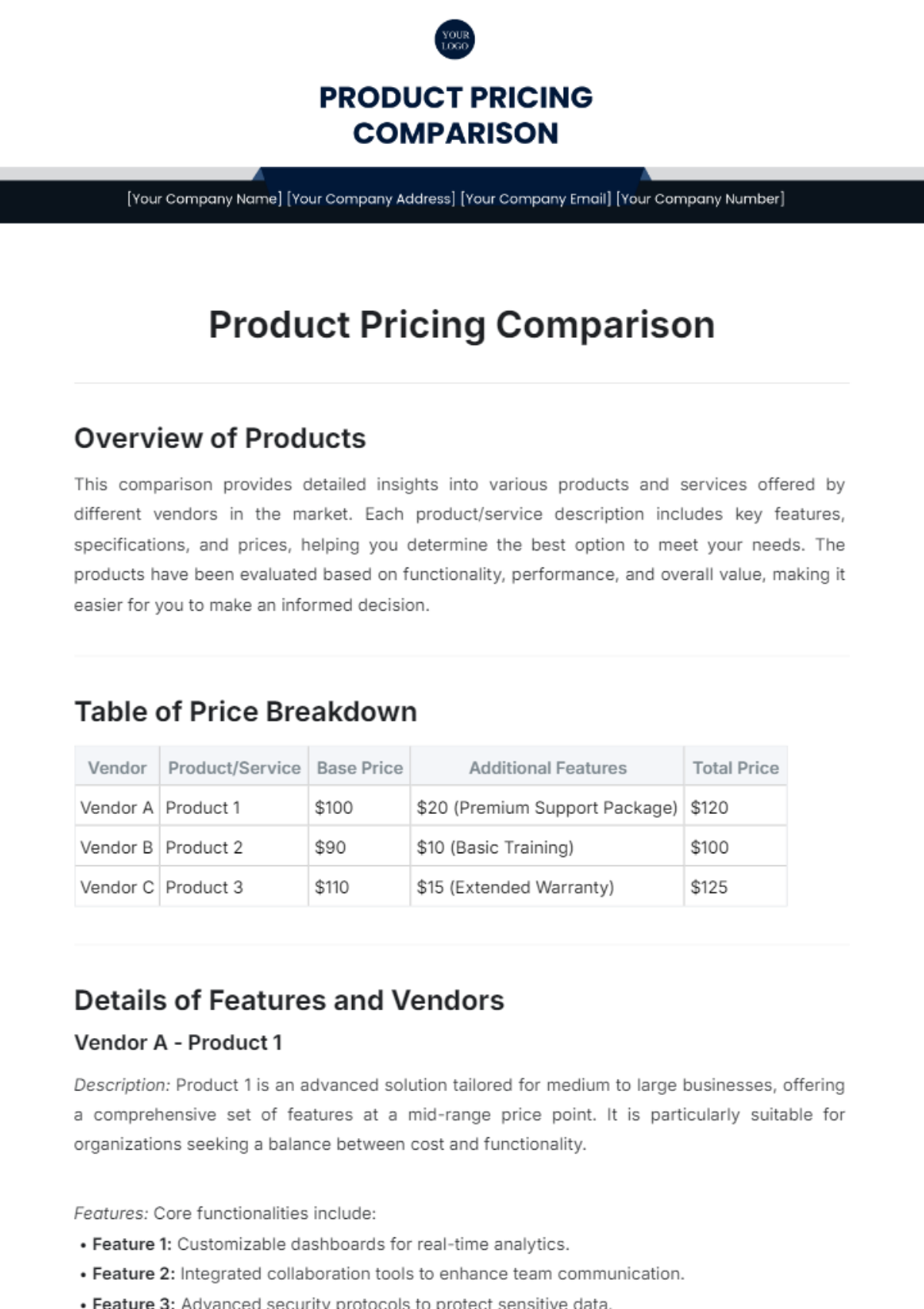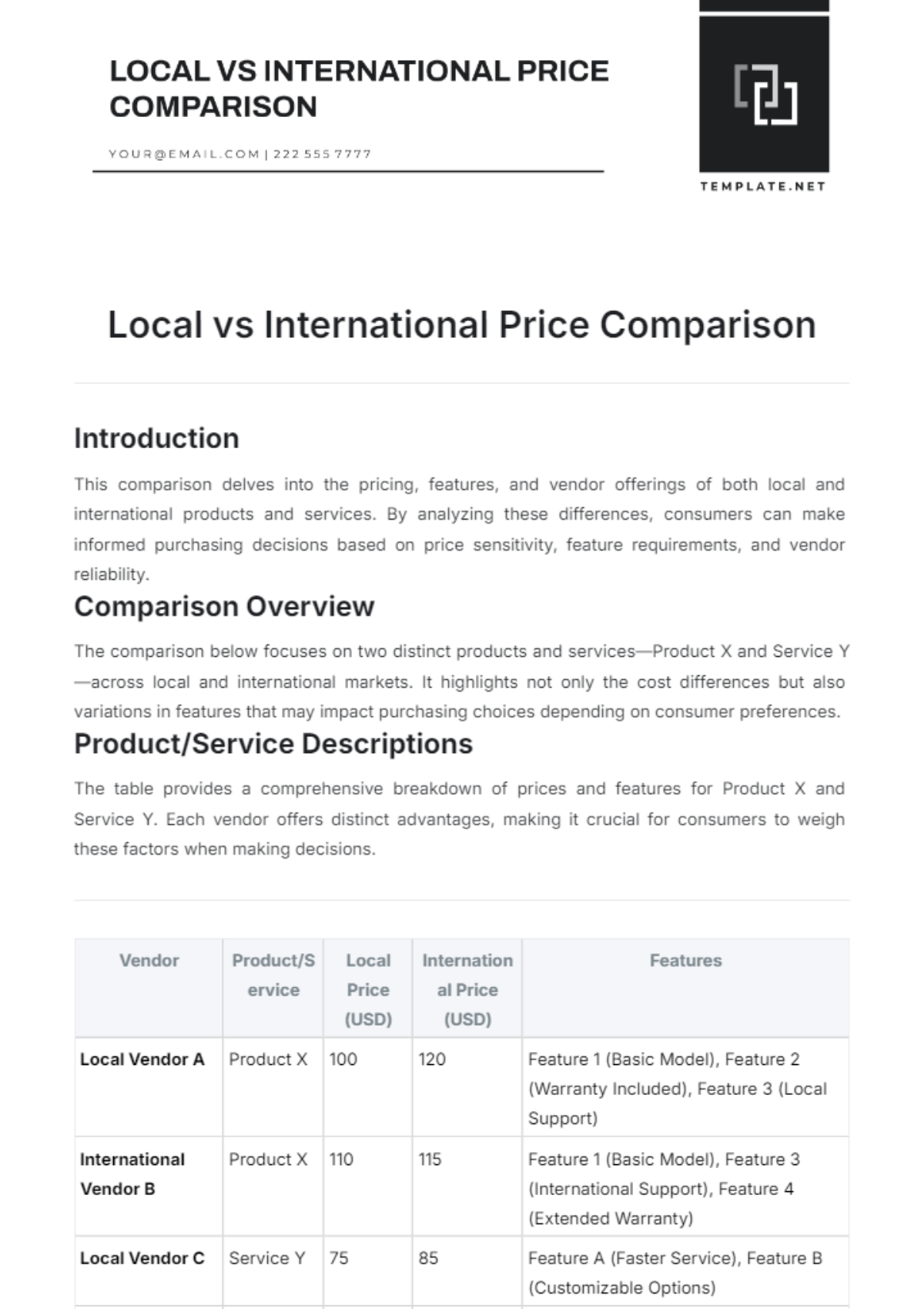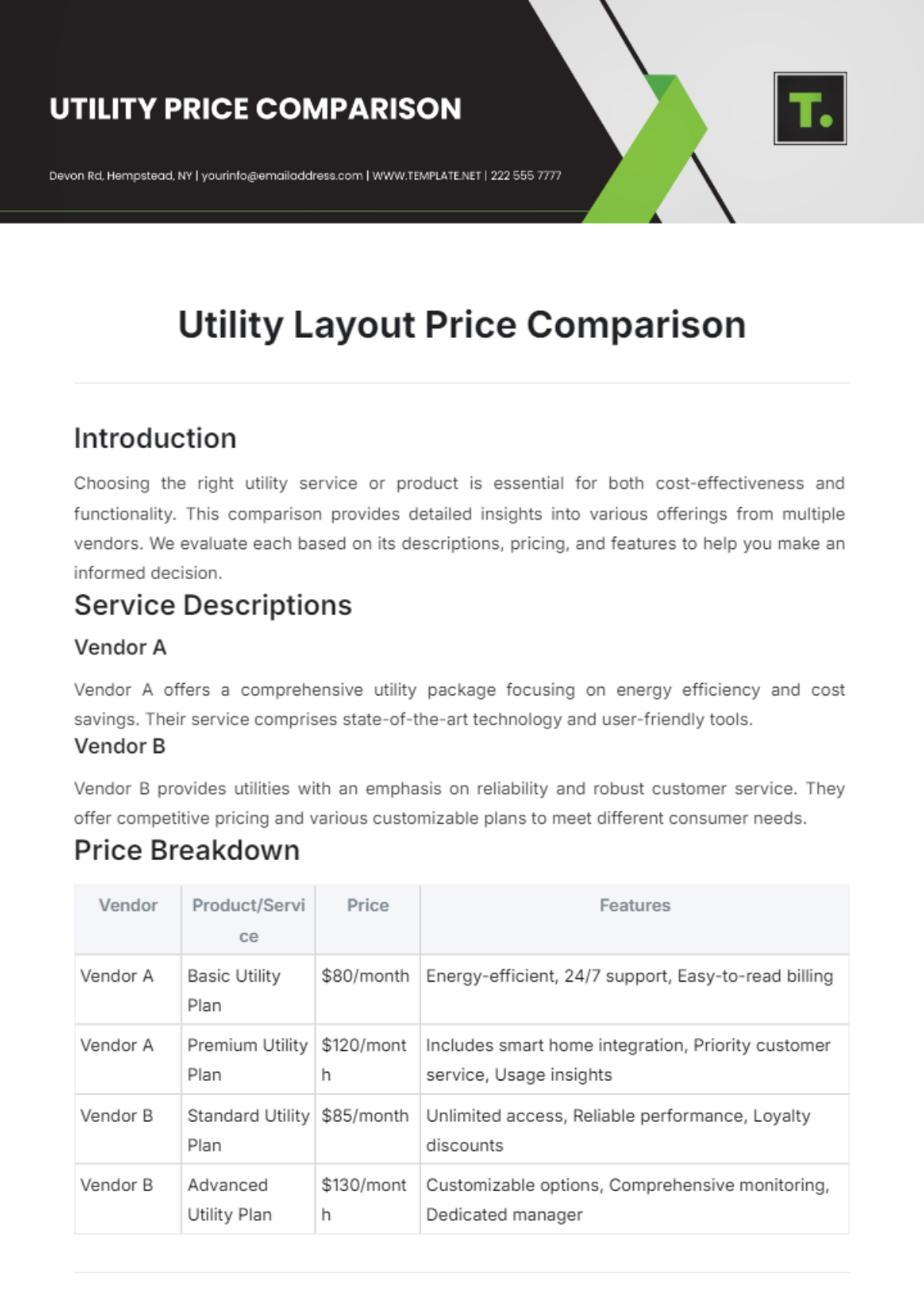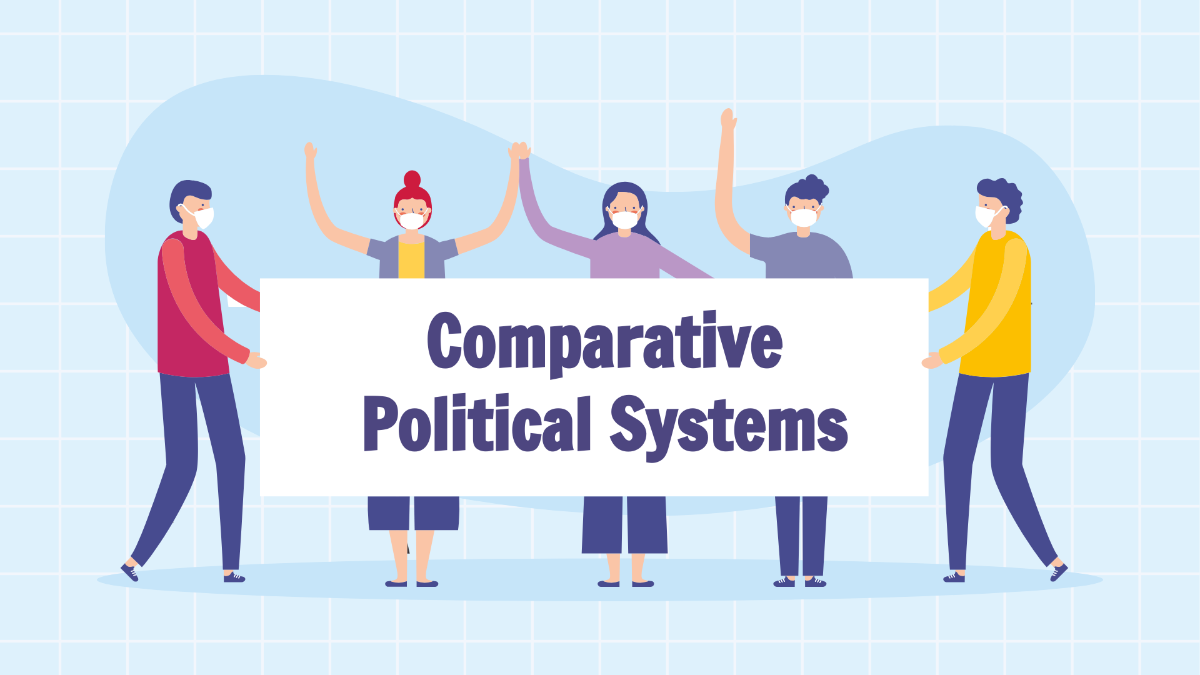Free Local vs International Price Comparison Template
Local vs International Price Comparison
Introduction
This comparison delves into the pricing, features, and vendor offerings of both local and international products and services. By analyzing these differences, consumers can make informed purchasing decisions based on price sensitivity, feature requirements, and vendor reliability.
Comparison Overview
The comparison below focuses on two distinct products and services—Product X and Service Y—across local and international markets. It highlights not only the cost differences but also variations in features that may impact purchasing choices depending on consumer preferences.
Product/Service Descriptions
The table provides a comprehensive breakdown of prices and features for Product X and Service Y. Each vendor offers distinct advantages, making it crucial for consumers to weigh these factors when making decisions.
Vendor | Product/Service | Local Price (USD) | International Price (USD) | Features |
|---|---|---|---|---|
Local Vendor A | Product X | 100 | 120 | Feature 1 (Basic Model), Feature 2 (Warranty Included), Feature 3 (Local Support) |
International Vendor B | Product X | 110 | 115 | Feature 1 (Basic Model), Feature 3 (International Support), Feature 4 (Extended Warranty) |
Local Vendor C | Service Y | 75 | 85 | Feature A (Faster Service), Feature B (Customizable Options) |
International Vendor D | Service Y | 90 | 80 | Feature B (Customizable Options), Feature C (24/7 Global Support) |
Price Breakdown
Product X: The local vendors offer competitive pricing with robust local support and warranty options. Local Vendor A offers the product for $100, with features like a basic model, including warranty, and local support, while International Vendor B prices it slightly higher at $110 (local) and $115 (international), offering international support and an extended warranty.
Service Y: In the case of Service Y, Local Vendor C provides it at $75 with faster service and customizable options, making it a cost-effective choice for consumers prioritizing speed. On the other hand, International Vendor D offers the same service for $90 (local) and $80 (international), providing the added benefit of 24/7 global support.
Visual Comparison
The following chart visually represents the price variations between local and international vendors for Product X and Service Y.
Figure 1: Local vs International Prices for Product X and Service Y
Conclusion
The analysis reveals that both local and international vendors offer specific benefits depending on consumer needs. Local vendors typically have lower pricing and the advantage of local support, while international vendors may offer additional features such as global support and extended warranties, albeit at a slightly higher cost.
Ultimately, consumers should evaluate the feature set alongside pricing, considering aspects such as support and warranty, to make the most suitable purchasing decision.











